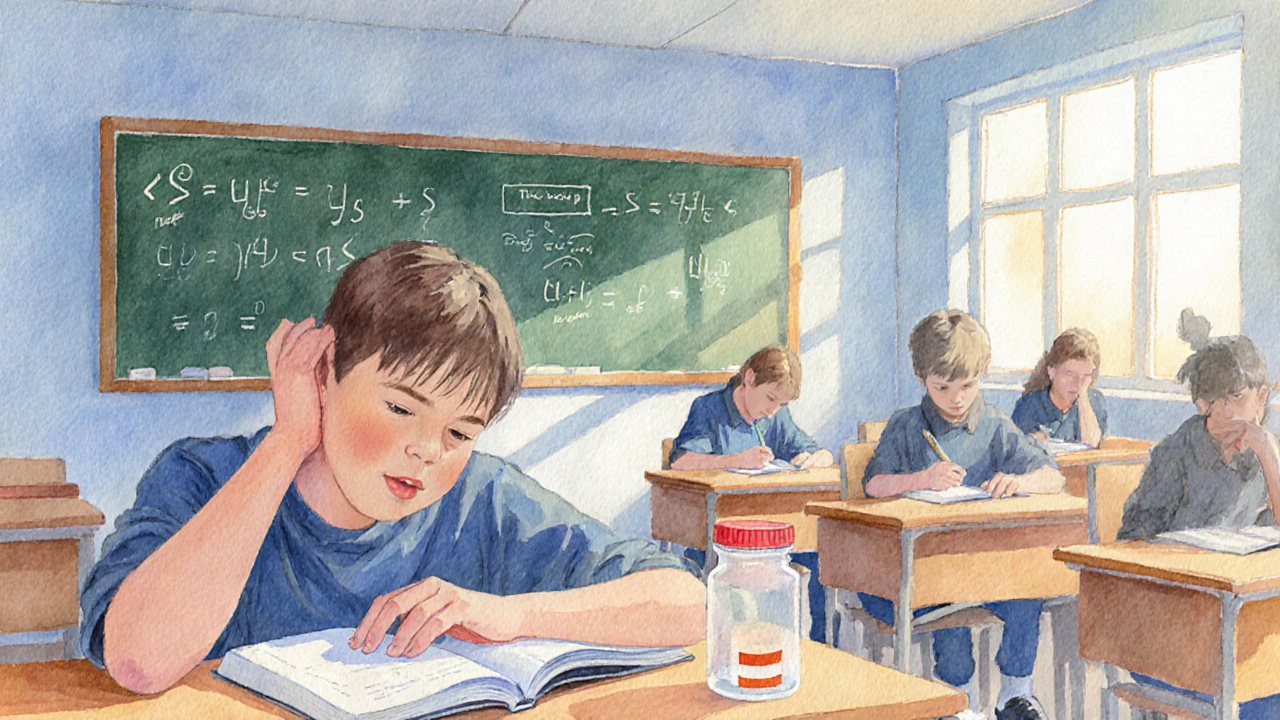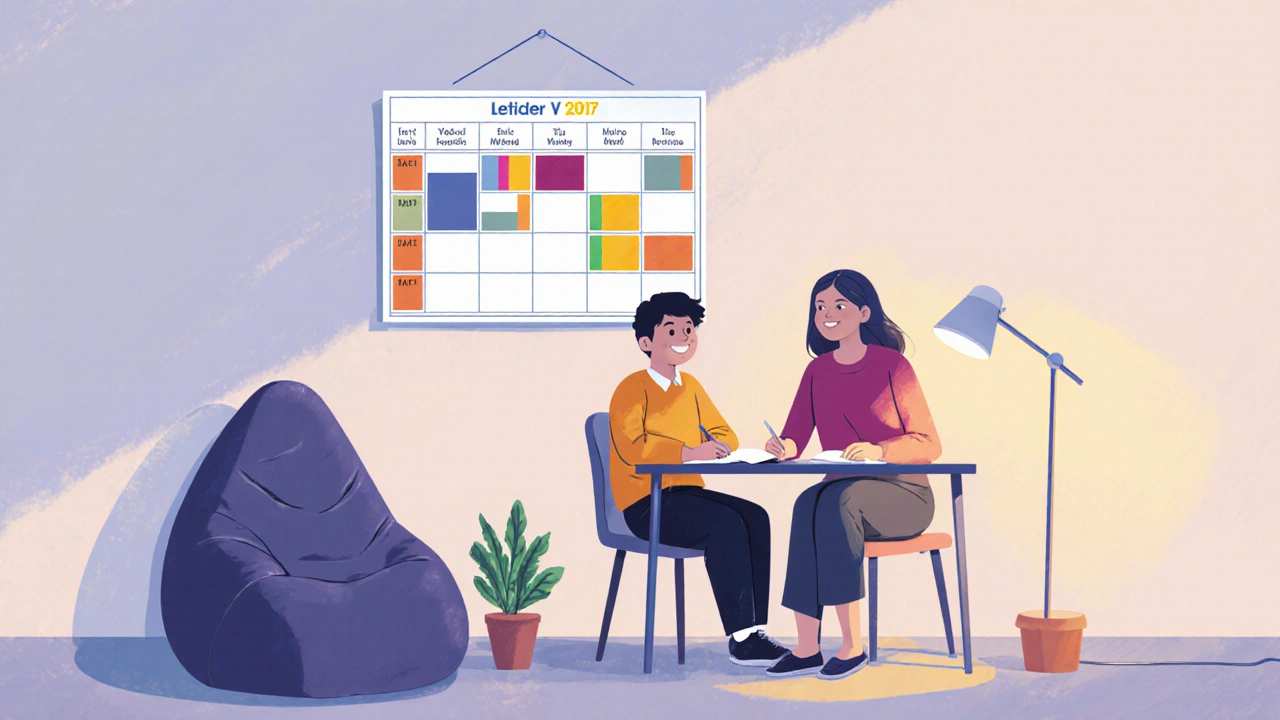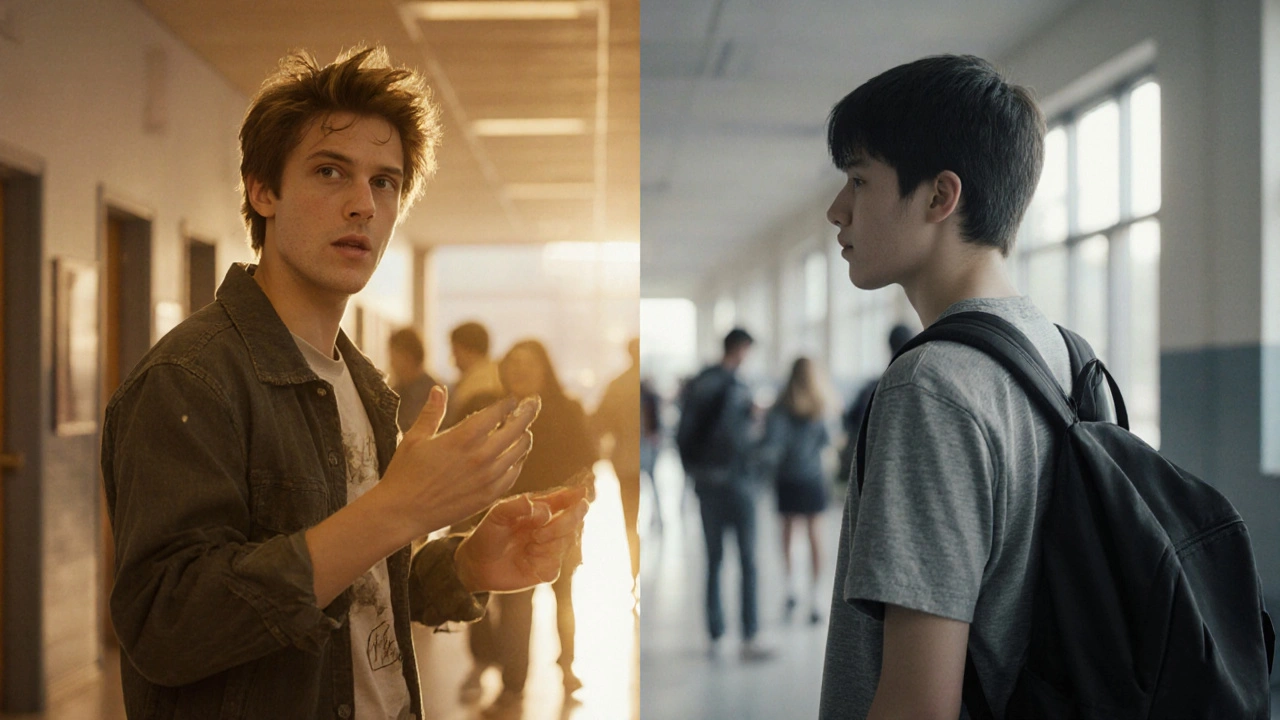Academic Performance Impact Calculator
How This Calculator Works
Based on research data, this calculator estimates potential academic improvement when implementing support strategies for students with bipolar disorder. The results are based on a 2022 University of Edinburgh study showing that accommodations can improve grades by 0.2-0.4 GPA points on average.
Estimated Academic Impact
GPA Improvement
Attendance Impact
Key Insights
The data shows that implementing more support strategies can lead to significant improvements in academic performance. With 7 strategies implemented, students can see up to a 0.4 point GPA improvement and up to 3 fewer days absent per term.
Implemented Strategies
Key Takeaways
- Manic‑Depressive Disorder creates mood swings that can impair attention, memory, and motivation.
- Both manic episodes and depressive phases can trigger sleep problems and erratic school attendance.
- Medication side‑effects and stigma often add extra hurdles for learning.
- Targeted strategies-structured schedules, coping skills, and school accommodations-can boost grades and confidence.
- Early detection and collaboration among students, families, and educators are crucial for long‑term success.
When a student battles Manic-Depressive Disorder a mood condition marked by extreme highs (mania) and lows (depression), school life can feel like a roller‑coaster. The disorder, more commonly called bipolar disorder, isn’t just about mood; it touches every part of a young person’s daily routine, from staying awake for class to remembering what was taught yesterday.
What Is Manic-Depressive Disorder?
Manic‑Depressive Disorder is a chronic mental‑health condition that flips between two opposite states. During a manic phase, energy surges, thoughts race, and risk‑taking spikes. In a depressive phase, fatigue, hopelessness, and difficulty concentrating dominate. The two poles can last days, weeks, or even months, and many students experience mixed episodes where high and low symptoms blend together.
Two main subtypes are recognized:
- Bipolar I Disorder characterized by at least one full manic episode, often followed by depressive periods
- Bipolar II Disorder defined by recurrent hypomanic episodes and more frequent, longer depressive phases
How Mood Swings Disrupt Learning
During mania, a student may feel unstoppable. They finish assignments in a flash, jump between topics, and underestimate the time needed for quality work. This hyper‑focus can look impressive, but it often results in sloppy answers, missed instructions, and a lack of depth. On the flip side, depression slows everything down. A child might stare at the textbook for an hour without absorbing a single line, forget to turn in homework, or skip classes altogether.
Both states interfere with Executive Function the brain’s set of skills for planning, organizing, and regulating behavior. A student’s ability to break down a project, keep track of deadlines, or shift attention between tasks becomes unreliable. Research from the University of Cambridge (2024) found that adolescents with untreated bipolar disorder scored 15‑20 points lower on executive‑function tests than their peers, and that gap translated directly into lower GPA.

Attendance, Sleep, and Classroom Performance
Regular attendance is the backbone of academic success, yet both mania and depression can wreck a schedule. Manic teens may stay up all night chasing ideas, then show up exhausted. Depressed teens often wake up feeling hopeless and simply skip school. Over a semester, these patterns can equal a loss of two to three weeks of classroom time.
Sleep disturbance is another hidden driver. Sleep Disturbance including insomnia during mania and hypersomnia in depression messes with memory consolidation. A study by the British Psychological Society (2023) linked chronic sleep loss in bipolar youth to a 0.3‑point drop in standardized test scores per month.
Medication, Side Effects, and Stigma
Many students rely on mood‑stabilizing drugs such as Lithium a common first‑line medication for bipolar disorder. While lithium can smooth out extreme highs and lows, it may also cause fatigue, tremors, or mild cognitive slowing-factors that can muddy classroom performance.
Other medications, like atypical antipsychotics or anticonvulsants, bring their own trade‑offs: weight gain, drowsiness, or dry mouth. It’s essential for teachers to know that a dip in grades isn’t always a lack of effort; sometimes it’s a side‑effect. Open communication with parents and health providers helps adjust dosages before the academic impact becomes severe.
Stigma adds another layer. Students might hide their diagnosis to avoid being labeled “crazy.” That secrecy prevents them from asking for accommodations such as extra time on tests or a quiet room for exams. Reducing stigma starts with awareness-teachers who can name the disorder normalise the conversation.
Practical Strategies for Students and Schools
Understanding Manic-Depressive Disorder helps teachers spot early signs. Here are evidence‑based tactics that work in real classrooms:
- Structured Routines: Use a visual timetable that breaks the day into predictable blocks. Consistency anchors students during manic spikes and depressive troughs.
- Flexible Deadlines: Allow a buffer of 24‑48 hours for major assignments. A short extension can compensate for a night of insomnia without diluting standards.
- Sleep Hygiene Education: Teach simple habits-no screens an hour before bed, regular sleep‑wake times, and short power naps. Schools can provide quiet spaces for students to recharge.
- Check‑In Systems: Assign a trusted staff member (counselling officer, mentor) to touch base weekly. Simple questions about mood and workload catch problems early.
- Skill‑Building Sessions: Offer workshops on time‑management, mindfulness, and stress‑reduction. Techniques like the “5‑Minute Reset” (pause, breathe, refocus) are quick and effective.
- Accommodations on Tests: Extra time, separate rooms, or the option to take breaks can level the playing field for students whose focus fluctuates.
- Collaboration with Parents: Share observation notes and ask families about medication schedules, so school expectations align with home treatment plans.

Comparing Bipolar I and BipolarII Effects on School
| Indicator | Bipolar I | Bipolar II |
|---|---|---|
| Average GPA reduction | ‑0.6 points | ‑0.4 points |
| Days absent per term | 8days | 5days |
| Sleep hours (average) | 5.8hrs (manic) / 9.2hrs (depressive) | 6.4hrs / 10.1hrs |
| Medication side‑effect reporting | 45% (fatigue) | 30% (sedation) |
| Self‑reported concentration issues | High during mania, low during depression | Consistently moderate |
Both subtypes hurt performance, but BipolarI tends to cause sharper drops during manic episodes, while BipolarII’s longer depressive phases lead to steady, cumulative impairments. Tailoring support to the subtype-more structure for mania, more emotional support for depression-makes a measurable difference.
Next Steps and Resources
If you suspect a student is grappling with manic‑depressive symptoms, follow this quick checklist:
- Document specific behaviours (e.g., missed homework, erratic sleep, impulsive risk‑taking).
- Speak privately with the student, using non‑judgmental language.
- Contact the school counsellor and suggest a professional assessment.
- Review the student’s Individual Education Plan (IEP) or create one focused on mental‑health accommodations.
- Implement at least two of the strategies listed above and monitor progress over four weeks.
Helpful resources include the UK’s NHS mental‑health guide on bipolar disorder, the YoungMinds charity for youth mental health, and local university counselling services that often run free workshops for schools.
Frequently Asked Questions
Can a student with bipolar disorder graduate on time?
Yes. With proper medication, therapy, and school accommodations, most students can meet graduation requirements. Early detection and consistent support are the biggest predictors of success.
Do school‑based accommodations affect a student’s GPA?
Accommodations such as flexible deadlines and test‑taking rooms have been shown to improve grades by 0.2‑0.4 GPA points on average, according to a 2022 University of Edinburgh study.
Is it safe for teenagers to take lithium?
Lithium is widely used and considered safe when monitored regularly. Blood‑level checks, kidney function tests, and dosage adjustments keep risks low. Parents should work closely with a paediatric psychiatrist.
How can teachers recognise early signs of a manic episode?
Look for sudden spikes in energy, rapid speech, overly grand ideas, reduced need for sleep, and impulsive behaviours such as risk‑taking or excessive talking in class.
What role does psychotherapy play in academic improvement?
Cognitive‑behavioural therapy (CBT) and dialectical‑behaviour therapy (DBT) teach coping skills, emotional regulation, and problem‑solving. Students who attend weekly therapy show a 20% reduction in missed assignments.


Written by Felix Greendale
View all posts by: Felix Greendale